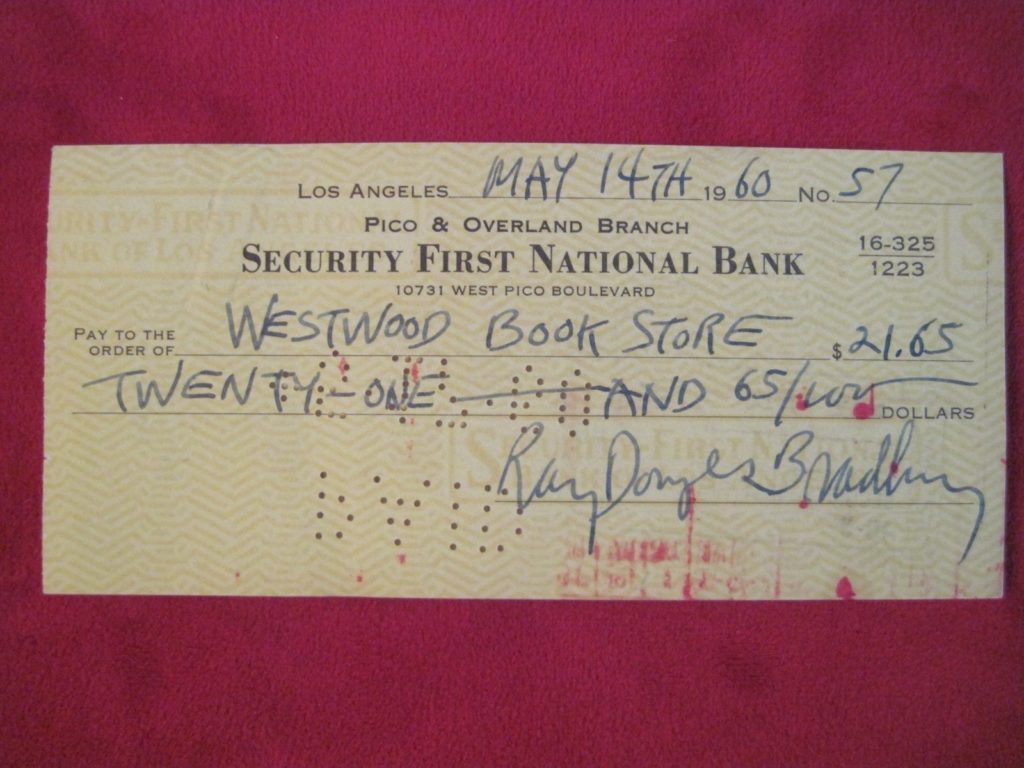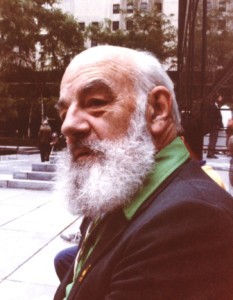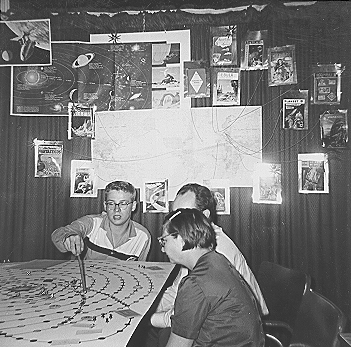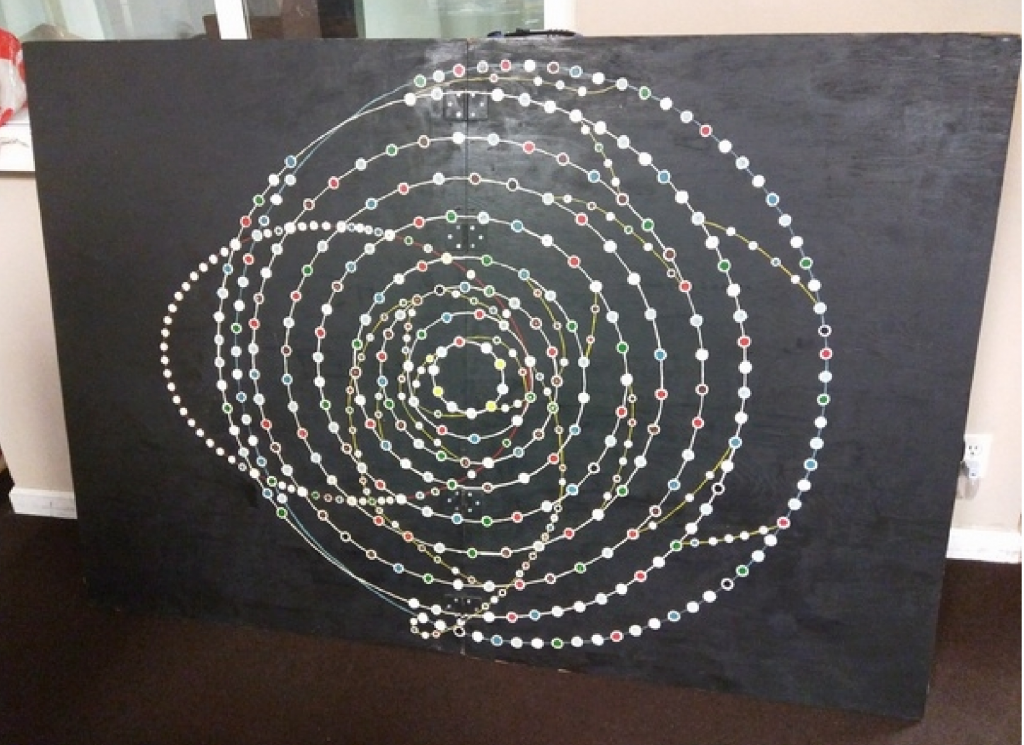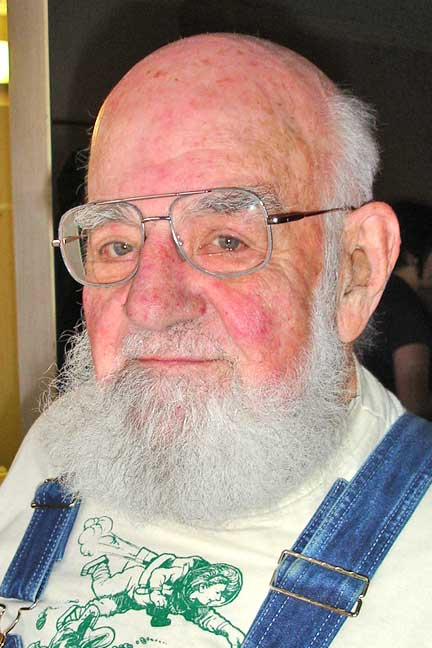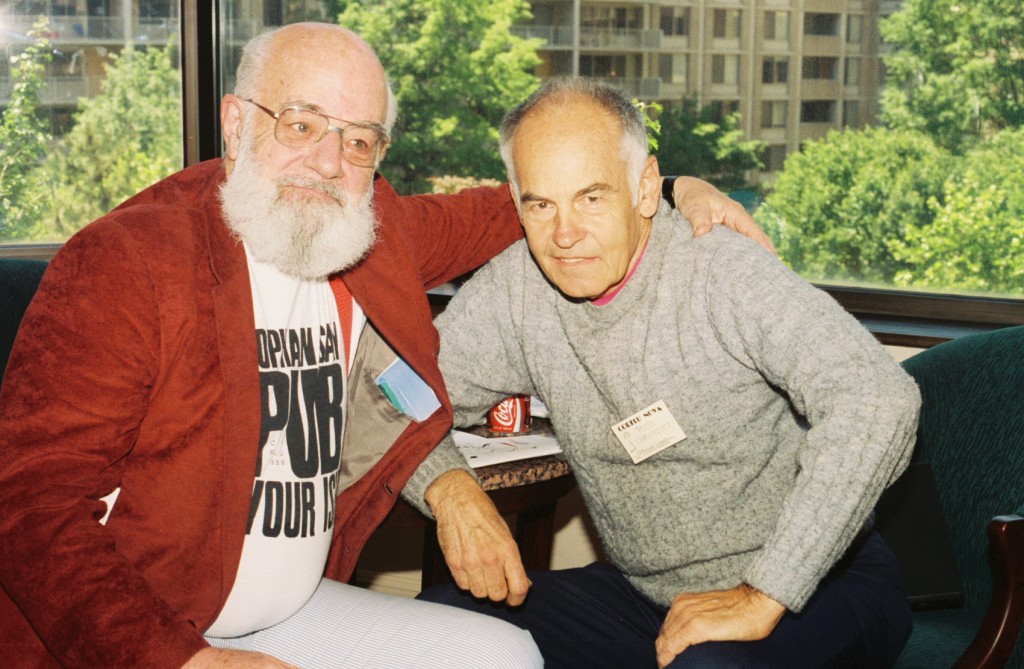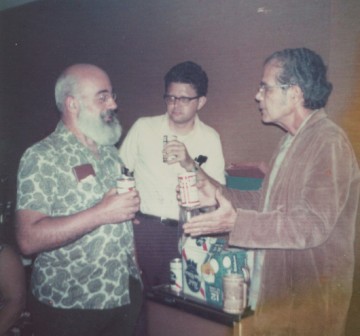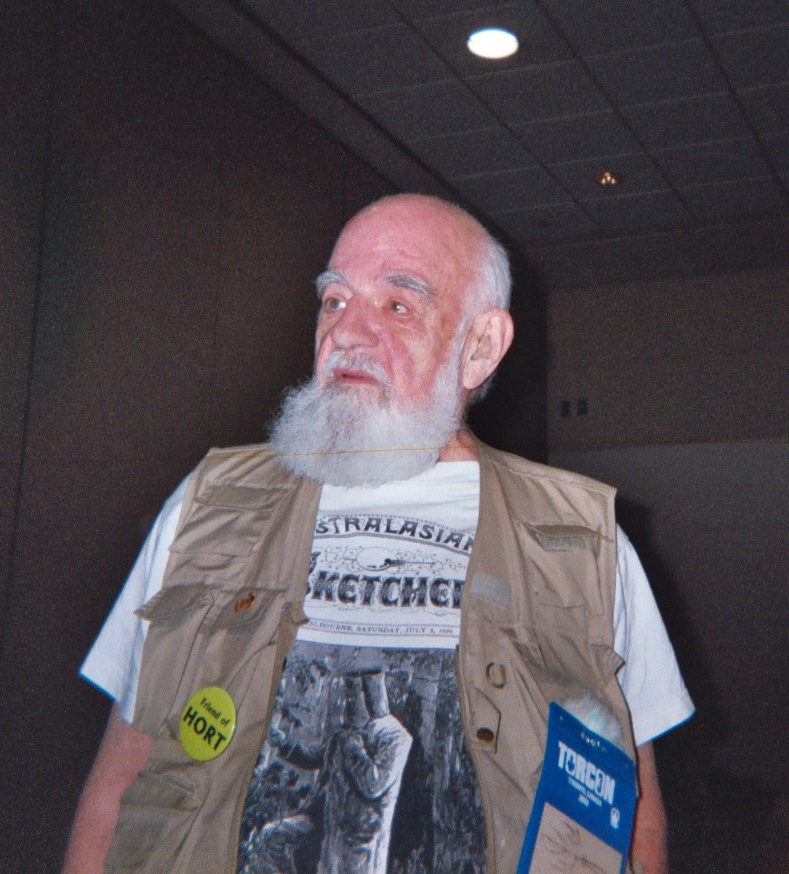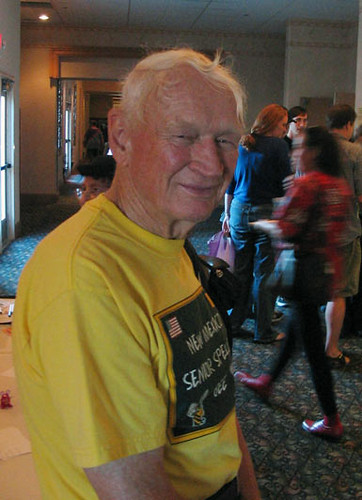(1) OUT TO DRY. Daily Beast analyzes why corporations leave comics creators twisting in the winds of social media: “How Marvel and Corporate Comics Are Failing the ‘Vulnerable’ Creators Behind Their Superheroes”.
…Part of the trouble, Edidin says, is that comics is a prestige industry, which attracts people for whom the primary reward is simply getting to work in comics. And because there are always people clamoring to be part of the industry, even famous creators are ultimately disposable, and often disposed of. (The very existence of the Hero Initiative, which raises money for comics creators in need, testifies to this.) While the industry can be tight-knit and often supportive, it also leaves creators to fend for themselves. “You don’t really work in comics unless you really care about it, because it’s pretty much a guarantee that you’ll be low-paid,” Edidin says. “So what we’ve got at this point is an industry full of people who are exquisitely financially vulnerable, and who generally feel extremely passionate about what they do… and can’t afford to lose their work or their jobs. And that includes publishing employees.”
In such an environment, the standards for what kind of public speech is acceptable are often either left unclear or inconsistently applied. Simply staying off social media isn’t really an option for freelancers, especially those still working to become established, Edidin points out: having an active profile somewhere like Twitter is vital for networking, getting the word out about projects, and talking shop with fellow freelancers and enthusiasts. But because freelancers aren’t official employees, these social media accounts are—by definition—personal. Lines between personal opinions and professional ones are blurry, and few companies offer solid social media guidelines for dealing with them….”
(2) WHAT IT MEANS TO BELIEVE. Candidates for Arisia Inc. office Andy Piltser-Cowan and Jade Piltser-Cowan discuss what is meant by “’Believe Survivors’ vs. ‘Due Process’”.
This is a topic that we have been wanting to write on for a while. It’s something Andy has grappled with over the years as an attorney of conscience whose job is sometimes to represent the accused, and other times the victim, and of course is also a member of society free to have his own opinions when not representing a client.
What do we mean when we say “believe women” or “believe survivors?” Some folks say, “when you report a robbery, or a theft, or some other crime, nobody starts by asking how you fought back, what you were wearing, or whether you made it up.” …
(3) THEY’LL BE IN DUBLIN. Next year’s Worldcon has released more names of people who have agreed to be on program: “Look Who’s Coming to Dublin 2019”.
November Early Confirm List
Elizabeth Bear
John Berlyne
Marie Brennan
S.A. Chakraborty
Paul Cornell
Jack Dann
Lucienne Diver
Cory Doctorow
Scott Edelman
Steven Erikson
Jo Fletcher
Sarah Gailey
Max Gladstone
Daryl Gregory
Joe Haldeman
Ju Honisch M.A.
SL Huang
Wataru Ishigame
James Patrick Kelly
Conor Kostick
Mary Robinette Kowal
Rebeca Kuang
Mur Lafferty
Yoon Ha Lee
Paul Levinson
Jo Lindsay Walton
Shawna McCarthy
Mary Anne Mohanraj
Mari Ness
Garth Nix
A.J. Odasso
Sarah Pinsker
Lettie Prell
Gillian Redfearn
Karl Schroeder
V.E. Schwab
Brian Showers
Robert Silverberg
Rebecca Slitt
Alan Smale
Melinda Snodgrass
Allen Steele
Christine Taylor-Butler
Adrian Tchaikovsky
Lisa Tuttle
Mary Watson
Fran Wilde
Sean Williams
Terri Windling
Navah Wolfe
Micah Yongo
E. Lily Yu
(4) DUBLIN 2019 ACCESS. People should contact Dublin2019 now with hotel accessibility requests. The website’s Accessibility Policy page says —
We will have information on accessible accommodation in mid-September 2018, with access bookings opening in early December 2018. People needing Accessible rooms will be asked to register with the Access team to help people get the most appropriate room.
And judging by this tweet they’re already being helpful —
Pleased to hear from @Dublin2019 Worldcon access requirements folk, re sorting our accessible hotel requirements for next August. Always delighted by how helpful Worldcon volunteers are re sorting this. We’ll be booking ahead of general bookings opening. https://t.co/yuh0cAg4xH
— Vivienne Dunstan (@vivdunstan) November 7, 2018
(5) LOSCON 45 PROGRAM. Loscon programming is now LIVE on Grenadine — Loscon-45. The con runs Thanksgiving weekend.
And Galactic Journey will do a presentation that — in keeping with their 1963 sequence — occurs a simulated two days after the Kennedy assassination!
It is November 24, 1963, and a nation is in mourning. The death of a youthful President and the heating up of struggles in southeast Asia and the southern United States mark a harsh divide between the past and the new era.
There’s a sharp transition in culture, too: The first British invasion since 1812 features mop-tops and mod suits rather red coats, but its influence will be as profound. And not just music — the British New Wave of science fiction (and its American counterpart) are ushering in new ideas, diverse viewpoints, weirder topics….
(6) CROUCHING TIGER HIDDEN CAPTAIN. Deadline reports “‘Crazy Rich Asians’ Michelle Yeoh In Talks For ‘Star Trek’ Spinoff On CBS All Access”.
The return of Patrick Stewart’s Jean-Luc Picard was the first official series of the Trekverse expansion, and it looks like another Starfleet captain could be talking the helm in her own show too.
Crazy Rich Asians star Michelle Yeoh is in talks to reprise her Star Trek Discovery role of Captain Emperor Georgiou for a stand-alone CBS All Access series, I’ve learned.
(7) TAKE PIN IN HAND. Amazing Stories’ Steve Davidson would love to hear from readers about his magazine. Here’s an incentive: “Oh Yeah!? Yeah! Sez You! Well Then – Write a Letter , Maybe You’ll Win Something”.
Write a letter of comment to Amazing Stories and you would win a collectible lapel pin! It’s pretty simple: read our issues, write a letter of comment, email it (or mail it, old school is appreciated!) and if we think it is sufficiently pithy, inciteful, provocative and/or informative, we’ll mail you a one-of-a-kind collectible Amazing Stories lapel pins. Read on to learn more about the history of letter writing in fandom. (Mail to: Amazing Stories, PO Box 1068, Hillsboro, NH 03244. Email [email protected])
(8) MYSTERY CATS. Diane A.S. Stuckart, in “Five Favorite Fictional Feline Sleuths” at Criminal Element, recommends stories with cats in them that SJWs would like, including Poe’s “The Black Cat,” Carroll’s Chrisre Cat, and Disney’s “That Darn Cat.”
Midnight Louie.
A cross between Koko and Bogey’s version of Sam Spade, this tough-talking black cat stars in Carole Nelson Douglas’ alphabetized and color-coded Cat in a… series. He shares narration and investigating duties with his human, Temple Barr, out on the mean-ish streets of Las Vegas.
Louie has no supernatural powers, but he has the feline skills of stealth and persistence that make him a crack investigator. And while he talks tough, he has a soft spot for Temple and will risk life and paw for her. Louie was one of the first felines to narrate his own mystery series. I started reading him back in the 90s and promptly fell in love with him. I haven’t made it through the entire colorized alphabet of novels yet, but intend to eventually rectify that.
(9) CHECK IT OUT. What makes this autograph really rare? “Ray Bradbury Signed Check With His Rare Full Signature – Ray Douglas Bradbury” — now up for bidding on eBay.
(10) TRIVIAL TRIVIA
When legends meet: Ringo was the only member of the Beatles whom Ray Bradbury met in person. (Backstage at an Eagles concert) Ringo became so excited at the sight of Bradbury he yelled, “It’s Ray Bradbury!” began running to hug him and tripped over a chair.
(11) TODAY’S BIRTHDAYS
[Compiled by Cat Eldridge and JJ.]
- Born November 10, 1889 – Claude Rains, Actor whose first genre role was as Dr. Jack Griffin in the 1933 film The Invisible Man. He would go on to play Jacob Marley in Scrooge, Prince John in The Adventures of Robin Hood, Sir John Talbot in The Wolf Man, and Erique in The Phantom of the Opera. (Died 1967.)
- Born November 10, 1932 – Roy Scheider, Actor, Producer, and Amateur Boxer played Dr. Heywood R. Floyd in 2010, the sequel to 2001: A Space Odyssey. His other major genre performance was as Captain Nathan Bridger in the SeaQuest DSV series. He also has roles in The Curse of the Living Corpse (his first acting role, a very low-budget horror film), one of The Punisher films, Dracula III: Legacy and Naked Lunch which may or may not be genre, and the technothriller Blue Thunder (JJ says yay! Blue Thunder!). I do not consider the Jaws films to be genre, but you may do so.
- Born November 10, 1946 – Jack Ketchum, Writer who was mentored by Robert Bloch, horror writer par excellence. Winner of four Bram Stoker Awards, he was given a World Horror Convention Grand Master Award for outstanding contribution to the horror genre. I’ll admit I’ve not read him, so I’ll leave it up to the rest of you to say which works by him are particularly, errr, horrifying. Oh, and he wrote the screenplays for a number of his novels, in all of which he quite naturally performed. (Died 2018.)
- Born November 10, 1950 – Dean Wesley Smith, 68, Writer and Editor of Pulphouse magazine, for which fortunately Black Gate has provided us with a fascinating history you can read here. Pulphouse I first encountered when I collected the works of Charles de Lint, who was in issue number eight way back in the summer of 1990. As a writer, he known mostly for his work in licensed properties such as StarTrek, Smallville, Aliens, Men in Black, and Quantum Leap. He is also known for a number of his original novels, such as the Tenth Planet series, on which he collaborated with his wife, Kristine Kathryn Rusch.
- Born November 10, 1955 – Roland Emmerich, 63, Writer, Director, and Producer originally from Germany. Usually I don’t touch upon SJW affairs here, but he’s a very strong campaigner for the LGBT community, and is openly gay, so bravo for him! Now back to his genre credits. The Noah’s Ark Principle was written and directed by him in 1984 as his thesis, after seeing Star Wars at the Hochschule für Fernsehen und Film München. Moon 44 followed, which likely most of you haven’t seen, but now we get to his Hollywood films: to wit Universal Soldier, The High Crusade (yes the Poul Anderson novel), Stargate, Independence Day… no, I’m going to stop there. Suffice it to say, he’s created a lot of genre film. And oh, he directed Stonewall, the 2015 look at historic event.
- Born November 10, 1960 – Neil Gaiman, 58, Writer from England whose work has not just been published as fiction, but has been made into comic books, graphic novels, audioplays, and movies. Summarizing him is nigh unto impossible so I won’t, beyond saying that his works include Neverwhere, Anansi Boys, the Sandman series, Stardust, American Gods, Coraline, and The Graveyard Book. He has awards beyond counting – including, but not limited to, Eisners, Harveys, Hugos, Nebulas, and Bram Stokers. As for film, I think the finest script he did is his “Day of The Dead” one for Babylon 5, not either of his Doctor Who scripts. (Your opinions will, I know, differ.) The animated Coraline is, I think, the most faithful work from one of his novels; the Neverwhere series needs to be remade with decent CGI; and the less said about Stardust, the better. My first encounter with him was reading the BBC trade paper edition of Neverwhere, followed by pretty much everything else he did until the last decade or so, when I admit I stopped reading him, but I still remember those early novels with great fondness. I even read the Good Omens film script which he and Pratchett wrote.
- Born November 10, 1971 – Holly Black, 47, Writer best known for her Spiderwick Chronicles, which were created with fellow writer & illustrator Tony DiTerlizzi, and for the Modern Faerie Tales YA trilogy. Her first novel was Tithe: A Modern Faerie Tale. (It’s very good.) There have been two sequels set in the same universe. The first, Valiant, won the very first Andre Norton Award for Young Adult Science Fiction and Fantasy. Doll Bones, which is really, really creepy, was awarded a Newbery Honor and a Mythopoeic Fantasy Award. Suffice it to say that if you like horror, you’ll like her.
- Born November 10, 1989 – Taron Egerton, 29, Actor nominated for a Saturn Award for playing Gary “Eggsy” Unwin in Kingsman: The Golden Circle. He’s playing the title character in Robin Hood, due out in on the 21st of the month from Lionsgate. He’s also voicing El-Ahrairah, a rabbit trickster folk hero, in the forthcoming Watership Down series, and also voices Moomintroll in the also forthcoming Moominvalley series.
(12) COMICS SECTION.
- Non Sequitur makes a movie reference – then in comments, a reader sensibly asks, “Who would want to escape a bookstore?”
(13) ORAL HISTORY. What has it got in its tooth socketses?
https://twitter.com/41Strange/status/1061441878527139840
(14) INSIDE FANHISTORY. Fanac.org has posted video from MagiCon, the 1992 Worldcon, of Rusty Hevelin interviewing Art Widner.
MagiCon, the 50th Worldcon, was held in Orlando, Florida in 1992. In this video, Rusty Hevelin interviews Art Widner about the early days of fandom. The conversation ranges from the first fanzine (arguably published by Lovecraft) to the origins of FAPA to the Singleton suicide hoax. You’ll hear about the perils of mimeography, the start of the Strangers Club and even learn the plural of YHOS. If you are interested in Fan History, here’s your chance to get a personal view from someone who was there at the beginning. To read many of the fanzines discussed, go to FANAC.ORG.
(15) LETHEM. “I used to be a science fiction writer” — Jonathan Lethem is interviewed by NPR about what he’s up to now: “A Noir Novel For The Trump Era, From Jonathan Lethem”.
In a lot of ways, this is a book about trying not to think about the election. It’s about running off into a free space where maybe you can conceive that there isn’t just a right and a left, a red and a blue, a man and a woman; but that there’s some kind of possible reinvention. In that sense, it’s, you know, it’s chasing the old American fantasy of the frontier which is a … utopian space where something can be — a new kind of world can be set up.
(16) REALLY STRANGELOVE. BBC remembers “The war game that could have ended the world”:
…Role-playing Nato forces launched a single medium range nuclear missile, wiping Ukrainian capital Kiev from the map. It was deployed as a signal, a warning that Nato was prepared to escalate the war. The theory was that this ‘nuclear signalling’ would help cooler heads to prevail. It didn’t work.
By 11 November 1983, global nuclear arsenals had been unleashed. Most of the world was destroyed. Billions were dead. Civilisation ended.
Accidental signal
Later that day, the Nato commanders left their building and went home, congratulating themselves on another successful – albeit sobering – exercise. What Western governments only discovered later is that Able Archer 83 came perilously close to instigating a real nuclear war.
“There’s evidence at the highest levels of the Soviet military that they were finding it increasingly difficult to tell drills from an actual attack,” says Nate Jones, director of the Freedom of Information Act Project for the National Security Archive in Washington DC, an independent non-profit organisation that advocates for open government. “We’re now amassing a collection of documents confirming that the Soviets were really scared the West would launch a nuclear strike.”
(17) THE RIGHTS TROUSERS. The Hollywood Reporter brings us what could be good news on the animation front (“‘Wallace & Gromit’ Producer Aardman Animations Transfers Ownership to Employees”). To help maintain its independence, Aardman Animations has become a majority employee-owned company.
In an era of entertainment industry mergers and acquisitions, the founders of British animation powerhouse Aardman – the much-loved Oscar-winning studio behind Wallace & Gromit and Shaun the Sheep – have moved to ensure their company’s continued independence by transferring it into employee ownership.
The decision, made by Peter Lord and David Sproxton, who first set up Aardman in 1972, will see the majority of company shares transferred into a trust, which will then hold them on behalf of the workforce.
Speaking to The Hollywood Reporter, both Lord and Sproxton explained that the move was about seven years in the making, and while it wasn’t an indicator of their imminent departure, meant that Aardman was in “the best possible shape” for when that moment came and would help secure its creative legacy and culture.
“We’ve spent so much time so much time building this company up and being so profoundly attached to it. It’s not a business to us, it’s everything, it’s our statement to the world,” said Lord. “Having done that for so many years, the last thing we wanted to do was to just flog it off to someone.”
(18) IN THEIR SPARE TIME. “John Boyega and Letitia Wright to star in sci-fi romance” — stars of SW VIII and Black Panther as a couple reminiscing while running out of air — Aida in space?
John Boyega and Letitia Wright are to star in a sci-fi romance story that is being billed as Romeo and Juliet meets Gravity.
The film is based on author Katie Khan’s novel, Hold Back the Stars.
(19) STOP, DROP, AND SCROLL. What could be more sincere than Marvel’s Captain America doing public service announcements?
[Thanks to Cat Eldridge, Chip Hitchcock, John King Tarpinian, Mike Kennedy, JJ, Martin Morse Wooster, Carl Slaughter, and Andrew Porter for some of these stories. Title credit goes to File 770 contributing editor of the day Kip Williams.]

